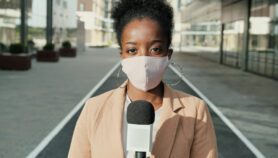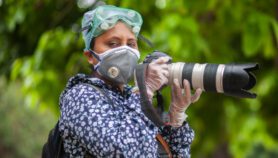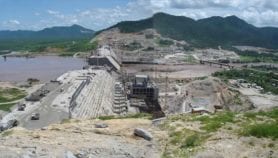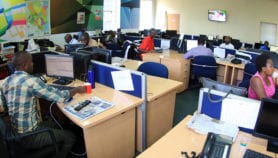By: Marina Joubert
Send to a friend
The details you provide on this page will not be used to send unsolicited email, and will not be sold to a 3rd party. See privacy policy.
- First stop, press releases
- Make time to talk
- Their papers, your stories
- Make the most of conferences
- A career built on credibility
Marina Joubert shows you how to source good science stories, from what to do with press releases to networking for exclusives.
Science journalists constantly need new story ideas. Short on time, it’s tempting to simply pluck stories from the press releases landing on your desk. But that would miss a lot of fascinating science, and risks ignoring events and issues that it’s your duty to cover. And a few scoops could do wonders for your career.
So here is how to find more stories, from making the most of press releases to ‘off the beaten path’ sources.
First stop, press releases
Press releases are how universities, research centres, journals and many other organisations distribute their science news. Signing up to receive them from press offices and dedicated websites is generally easy. And all journalists use press releases — it’s what you do with them that’s important.
Established science journalists may receive over a hundred press releases every day — the challenge for them is choosing which to pursue.
All press releases have some spin. An organisation might want to emphasise its role in a scientist’s work. A journal will want to highlight the ‘groundbreaking’ work that it publishes. It’s up to you to evaluate whether the work is a worthy story for your audience. You will need to consider the issuer’s reputation, the research achievements and publication track record of the experts quoted and, importantly, the hard evidence presented.
A good press release will point you to a newsworthy development, but you should investigate further, ask more questions, check the facts, use related research to put the story in context and, if possible, add a local perspective. If you take text directly from a press release you should cite it as such.
Regurgitating press releases word for word — a practice known disparagingly as ‘churnalism’ — produces stories that lack originality, context, perspective, balance and background.
For example, the University of Witwatersrand in Johannesburg, South Africa, issued this press release on a publication in Science about the discovery of 100,000-year-old paint. John Yeld, science writer at The Cape Argus, reworked it into a compelling story while this news story in The Times seems to be lifted directly from the press release.
Remember that high-profile press releases will probably reach all science writers in your region, or beyond. ‘Churnalism’ will be obvious, and will not help your reputation.
Make time to talk
Every researcher and commentator you interview could be a future news source, so don’t view them as only useful for one particular story. Building up relationships with people is important, and although it means investing time, this often pays off.
Following scientists who are active bloggers (and tweeters) can be a great way to hear what they are saying about the latest research in their fields — and how others are responding. It may also help you report science as it happens, allowing you to cover the process and challenges, rather than just final outcomes.
Spend time with scientists if you can. Contact local press officers and tell them you’re keen to attend media events, open days and conferences. You could focus on areas of science that particularly interest you, building a reputation for regular, in-depth reporting on particular topics.
Once you start getting to know a scientist, ask if you can join him/her on a research trip. Spending time with scientists ‘in the field’ is one of the best ways to deepen your knowledge.
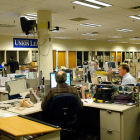
It’s important to get out of the news room
Flickr/Ben McLeod
A good relationship with press officers at universities and other research organisations should help you get quick access to relevant experts when deadlines loom. Over time, you should build up your own list of trusted, media-friendly scientists that you can contact. Try to expand this list all the time, so that you don’t quote the same experts over and over.
Once scientists know you, they may refer you to experts in other fields, or even tip you off about stories they’ve heard ‘through the grapevine’. If you are in a developing country, contact with local experts will help you to shape your stories for local relevance.
Once you’ve established your network of scientists and press officers, stay in contact. Just an occasional email or phone call asking what interests them most at the time may be enough. You want them to think of you first if they are considering giving an exclusive story to one journalist.
But don’t become an uncritical ‘cheerleader’ — remember where the boundaries lie. Make it clear that, as a reporter, you have a duty to challenge all information you are given and to report all relevant sides of a story. Your sources need to understand that, first and foremost, you serve your audience. You may need to explain that you have to ask questions about the ethics, morality and costs of the research, and its implications for society.
Their papers, your stories
Research papers are a vital source of science news and could uncover newsworthy stories that nobody else is writing about. If research organisations in your country are poor communicators, journals can keep you up to date with the latest developments in your region.
Monitoring lots of journals seems daunting, but many provide email alerts or RSS feeds, sending updates to you, rather than you having to remember publication dates.
But no-one can follow all the new science in all the journals. You will have to select the most relevant.
Not all journals are equal and ‘blockbuster’ science is almost always published in big journals such as Nature and Science. But if you work for a specialised outfit or are concentrating on local science, smaller journals might be where you find your best stories. Over time, it’ll become clear which journals you should monitor and which need less attention.
Ask relevant experts to recommend journals, then find out whether these offer services to journalists, such as email alerts or press releases.
And ask researchers to tell you when they’re publishing a newsworthy article, or see an interesting paper. Bear in mind their idea of newsworthy might be different from yours, but if you can communicate what you are after, you may get an inside track.



Monitoring lots of journals seems daunting but there are ways to select what’s most relevant to you
Flickr/ cudmore
Abstracts of papers are almost always free to read, giving you an idea of newsworthiness. But if you do use the story, read the whole paper. Abstracts won’t give you the implications, and press releases may exaggerate the importance, sometimes even interpret the results incorrectly.
When you have to gauge a research paper’s significance on your own, it pays to assess it carefully. If in doubt, ask a scientist with no links to the paper what they think. They may say the research methods are flawed or that the results will have little impact, causing you to rethink its newsworthiness.
Full papers are often available to journalists, and if not, scientists will often provide proofs. There are lots of resources for finding open access papers, such as the Open Science Directory, the Directory of Open Access Journals, the Open Directory Project and Pubmed Central.
Other websites may not point to open access papers, but do provide comprehensive databases. ScienceDirect, JSTOR and Pubmed are some of the most popular, while Scirus also houses information about scientists and institutions.
Be transparent. If writing for the web, provide a link to the original article. If not, cite at least the journal and researchers, so readers can find it for themselves.
Remember too that publication is sometimes only the beginning of a science story. Contact the scientist for follow-up developments and consider tracking whether other scientists cite the paper over time.
Make the most of conferences
Scientific conferences can provide a timely ‘news hook‘, getting science onto news pages and into news bulletins. While conference presentations are not necessarily peer-reviewed (yet), they are in the public domain (unless the meeting is closed to the public and media), and you can report them.
Read SciDev.Net’s tips on reporting from science conferences for ideas on preparing for a big meeting. If you want to get some exclusives, attend smaller sessions too. And the coffee and lunch breaks may provide opportunities to speak face-to-face to world-leading researchers who may only be in your country briefly.
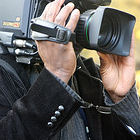


Press pass: make the most of press access to conferences and meetings
Flickr/quinn.anya
Don’t only go to big conferences. Media are often invited to smaller meetings and while these won’t necessarily deliver a scoop, they offer useful background and contacts, giving you the lie of the land in particular scientific communities.
Another way of tracking priority science areas is to monitor large grants, newly funded research programmes and science prize winners. The heads of science funding bodies and science policymakers in government, academies and societies are also valuable for comment (and sometimes speculation) on new challenges, trends and initiatives.
A career built on credibility
Wherever you’re getting your story ideas, maintaining your credibility is vital. Always check facts, whether you get them from press releases, newsletters, academic papers or policy documents. And reference them where possible to ensure transparency. Make it possible for your readers, listeners and viewers to find the primary source for verification and more information.
Over time, working in this way, together with a passion for science, will gain you a reputation for objective, balanced and accurate reporting with both your audience and scientists. And that’s important. Being recognised as a serious science journalist may be the ticket to becoming the first to hear about exciting developments in science.
Marina Joubert is a science communicator from Pretoria, South Africa.



